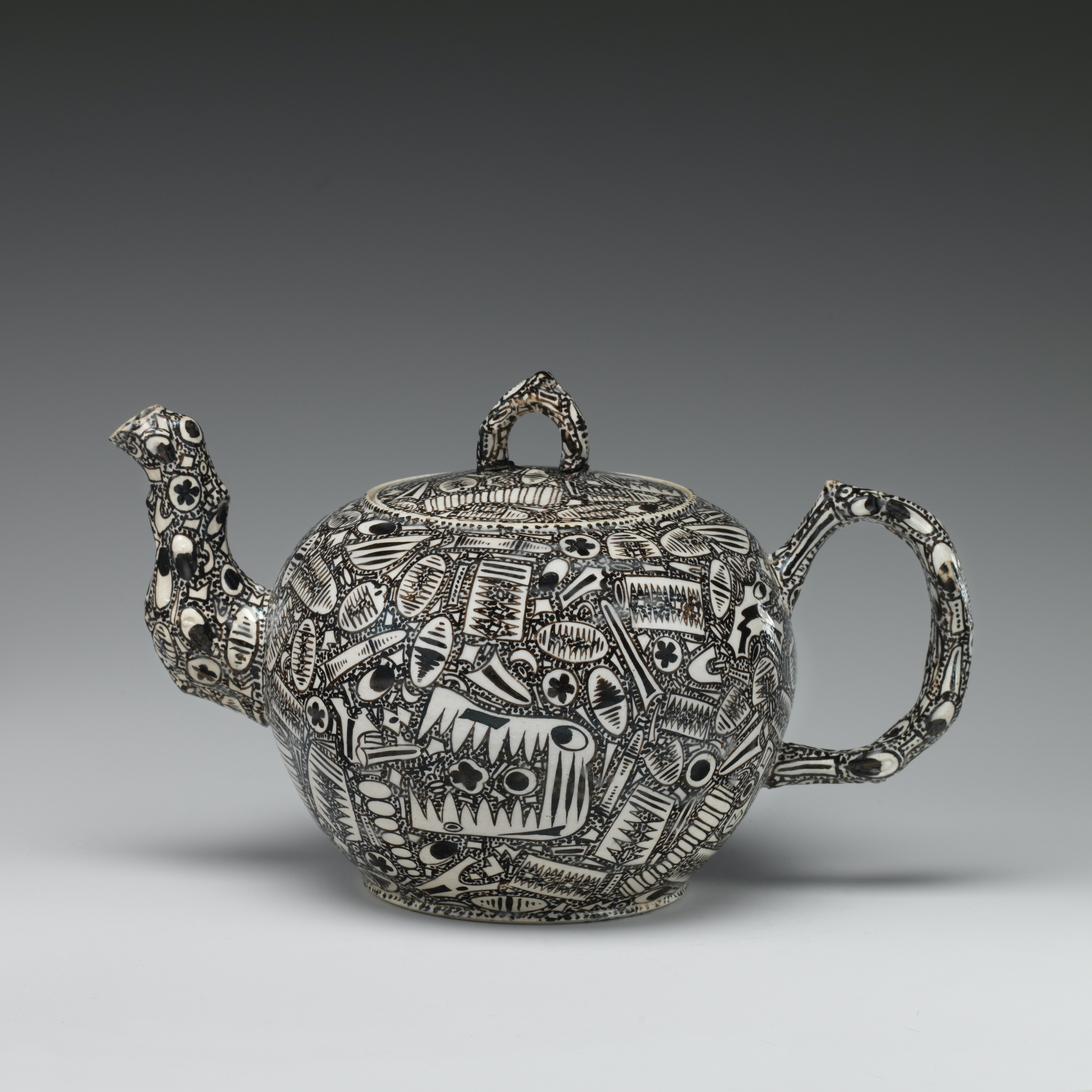We rarely present pottery or design, but I couldn't resist this teapot. Just look at it! Could you believe it was created in the 18th century, or that rich British aristocrats drank tea from it in their posh residences? It looks like it was made by Basquiat or Keith Haring in the 1980s! It is amazing. Even its shape combining with the abstract designs looks extremely modern.
The form was thrown on a potter’s wheel probably in Staffordshire, England, around 1760. Despite being small, it is visually striking. Look closely and you might see jaws and teeth jumping out at you from the black and white enamel decoration. Potters created this decorative scheme in imitation of a specific type of rock called crinoidal limestone, which was formed in the Carboniferous period around three hundred million years ago. When not in a fossilized form, crinoids are a type of sea animal that look like flowers moving and swaying on the seabed.
Natural history was a common polite pursuit for middling and elite people living in 18th-century Britain. Genteel men and women voraciously collected, noted, and studied plants, insects, and animals. Clearly, these animals and their fossil remains were of interest to 18th-century people.
I would drink my Earl Gray from it!
P.S. If you are not sure why it reminds you of Haring or Basquiat, check their style by following the links. And if you feel like having a tea right now, check our lovely selection of tea drinkers in paintings here. <3


 Unknown Artist
Unknown Artist